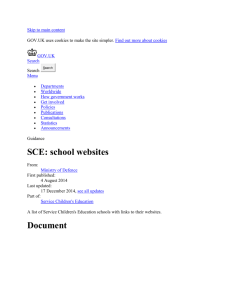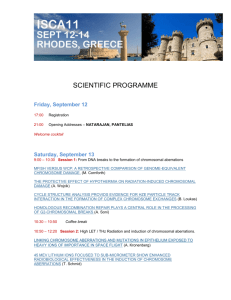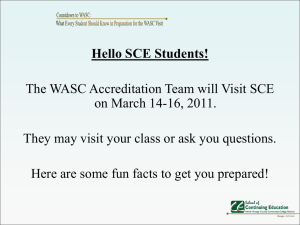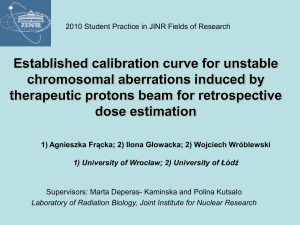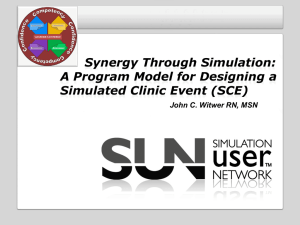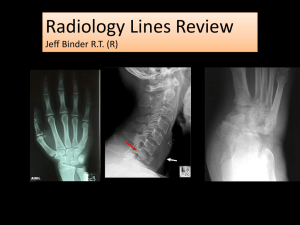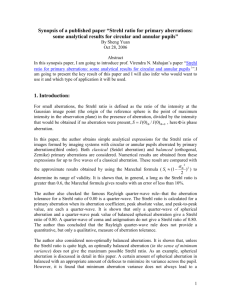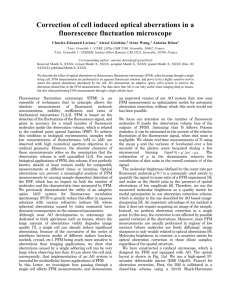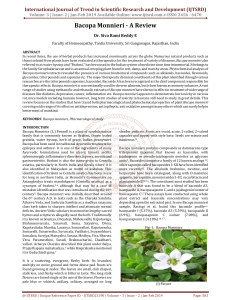SUPPLEMENTARY MATERIAL Isolation and evaluation of
advertisement
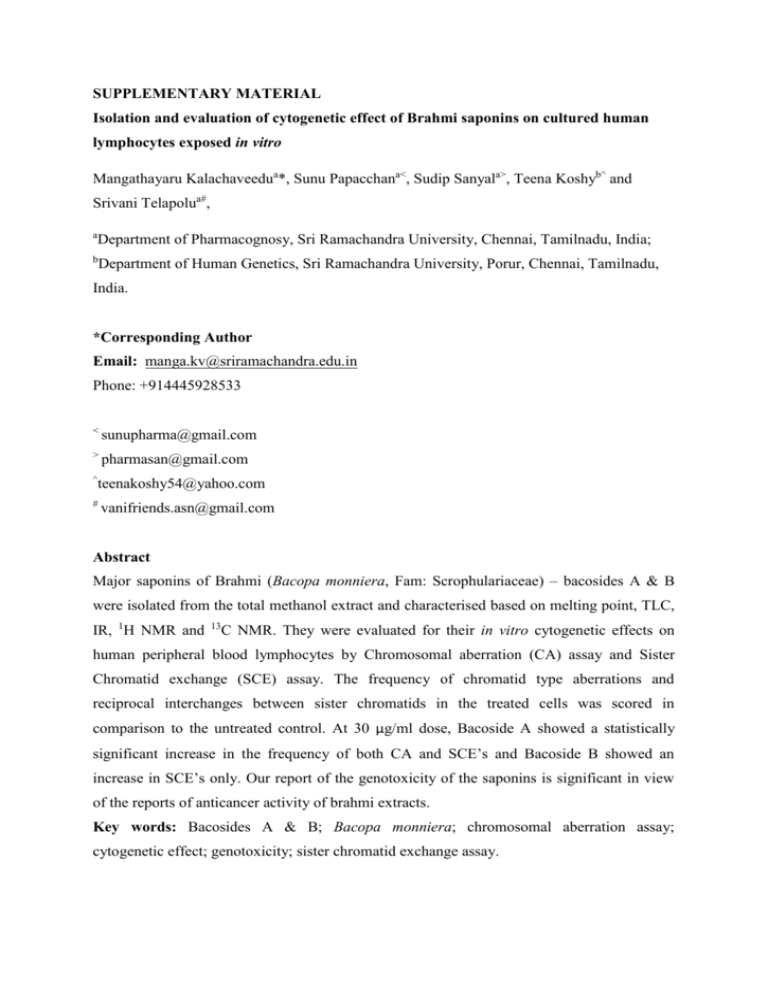
SUPPLEMENTARY MATERIAL Isolation and evaluation of cytogenetic effect of Brahmi saponins on cultured human lymphocytes exposed in vitro Mangathayaru Kalachaveedua*, Sunu Papacchana<, Sudip Sanyala>, Teena Koshyb^ and Srivani Telapolua#, a Department of Pharmacognosy, Sri Ramachandra University, Chennai, Tamilnadu, India; b Department of Human Genetics, Sri Ramachandra University, Porur, Chennai, Tamilnadu, India. *Corresponding Author Email: manga.kv@sriramachandra.edu.in Phone: +914445928533 < sunupharma@gmail.com > pharmasan@gmail.com ^ teenakoshy54@yahoo.com # vanifriends.asn@gmail.com Abstract Major saponins of Brahmi (Bacopa monniera, Fam: Scrophulariaceae) – bacosides A & B were isolated from the total methanol extract and characterised based on melting point, TLC, IR, 1H NMR and 13 C NMR. They were evaluated for their in vitro cytogenetic effects on human peripheral blood lymphocytes by Chromosomal aberration (CA) assay and Sister Chromatid exchange (SCE) assay. The frequency of chromatid type aberrations and reciprocal interchanges between sister chromatids in the treated cells was scored in comparison to the untreated control. At 30 μg/ml dose, Bacoside A showed a statistically significant increase in the frequency of both CA and SCE’s and Bacoside B showed an increase in SCE’s only. Our report of the genotoxicity of the saponins is significant in view of the reports of anticancer activity of brahmi extracts. Key words: Bacosides A & B; Bacopa monniera; chromosomal aberration assay; cytogenetic effect; genotoxicity; sister chromatid exchange assay. 1. Experimental: 1.1. Plant material The aerial parts of Bacopa monniera was collected from Renigunta, Andhra Pradesh, India. The identity of the plant was confirmed by Dr.Sasikala E, Reseach officer (Botany) CSMDRIA-Chennai-106. A herbarium sample (No: COP, PGP/27/08) was deposited in the Dept. of Pharmacognosy in Sri Ramachandra College of Pharmacy, SRU. 1.2. Chemicals Colchicine was purchased from HiMEDIA, Bromo deoxy uridine, Fluoroscence Photo reactivated Giemsa Staining solution and Lectin was purchased from Sigma. Pre coated TLC plates were purchased from E Merck. All other solvents and chemicals were procured from reputed suppliers. 1.3. Extraction and Isolation of saponins by column chromatography (Chatterjee et al, 1965) Finely powdered aerial parts of the plant were subjected for cold maceration with methanol. The concentrated extract was subjected for column chromatography. 15g of the plant extract was loaded to a silica gel column of 60-120 mesh, and was eluated with solvents of graded polarity such as hexane:ethyl acetate (1:1), ethylacetate:methanol (95:5-80:20), methanol. Fractions of about 75ml each were collected and monitored for compound elution by TLC. A precipitate appeared in the early concentrated fractions of ethylacetate and methanol (80:20). Later concentrated fractions yielded powdery sediment. Further purification of the these fraction concentrates by repeat chromatography followed by recrystallisation from acetone yielded two compounds – Compound A (190 mg) and Compound B (105 mg). Their melting points and mixed melting points along with the reference compounds were recorded. The purified compounds were then characterised by IR, 1H NMR and 13C NMR. 1.4. Genotoxic evaluation of Bacoside A and B: 1.4.1. Collection of Human Peripheral blood lymphocytes and culture initiation for SCE and CA The methodology to obtain metaphase chromosomes from a lymphocyte culture was modified from the IAEA Technical Report, 1986. Briefly, 3 ml of heparinized blood was taken from a 24 year old healthy female volunteer who was not on any drug treatment. The blood was divided into 3 equal aliquots in separate sterile centrifuge tubes. While 1ml of untreated blood was used as a control, 1ml of blood was treated with 30 μg/ml of Bacoside A and Bacoside B separately for ½ hour each. At the end of 30 minutes the blood was washed with RPMI-1640 thrice. Then a 72 hour culture for SCE and CA was initiated by supplementing the 1ml of blood with 80% RPMI-1640 medium, 20% fetal calf serum, 50µl BrdU (Stock = 1mg/ml) and 100µl/10ml of lectin (Stock = 1mg/ml) in sterile culture flask and incubating the cultures at 370C in a carbon dioxide incubator. At approximately the 67 69th hour, 50µl of colchicine added to the culture and the cultures were further incubated for 3 hours. At the end of 3 hours, the contents of vials are transferred to a clean centrifuge tube and centrifuged at 1000rpm for 10 min, and the supernatant was discarded. To the pellet 8ml of 0.045M KCl was added and incubated at 370C for 20 minutes. After incubation, the contents were centrifuged and the supernatant discarded. The cell pellets were washed thrice in the Carnoy’s fixative till a white cell pellet was obtained. The concentration of the cells were adjusted for adequate spreading and then subsequently dropped from an appropriate height onto pre cooled glass slides to allow for sufficient spreading of the chromosomes. The slides are then air dried and aged for two weeks prior to staining. 1.4.2. Giemsa staining and analysis for Chromosomal Aberration: The slides were washed, dried and stained with 5% Giemsa stain for 20 minutes. Slides were mounted with DPX and scanned at high magnification (100x).Over 100 metaphases of were scored in the treated and untreated cells to determine the baseline damage. Gaps, acentric fragments and breaks were the parameters used in this study to look for chromatid type aberrations. A total of 130 cells in normal control, 122 cells in Bacoside A treated cells and 145 cells in Bacoside B treated cells were scored for chromosomal aberrations. Total aberration frequency was calculated by using the formula: Number of Aberrations Total aberration frequency = Total number of cells 1.4.3. Differential Staining and Analysis for Sister Chromatid Exchange: The aged slides were dipped in 5% Hoechst solution for 20 minutes and rinsed with distilled water and air dried. Two drops of 2X SSC solution was added and cover slip was placed over it. The slides were left under bright sunlight until salt formation was seen at the periphery of coverslip indicating sufficient treatment with 2X SSC. The slides were washed, dried and stained with 5% Giemsa stain for 20 minutes. Slides were mounted with DPX and analysed for SCE. Over 100 metaphases of second cell cycle were scored for both the compounds and also for control to determine the baseline damage. Only cells which showed clear differential staining pattern, were taken into account for scoring. SCEs were analysed in cells which are only in 2nd cell cycle. The stages of different metaphases were recorded as per the guidelines in IAEA Technical Report (1986). Terminal exchanges and interstitial exchanges are the two parameters used in this study to measure sister chromatid exchange. With the data obtained, SCE frequency, proliferative indexes (PI), Average Generation Time (AGT), were calculated as given below. No. of exchanges SCE frequency = Total no. of cells in 2nd cell cycle (1xM1) + (2xM2) + (3xM3) PI = Total Cells Scored M1, M2, M3 = No: of cells in 1st, 2nd, 3rd cell cycle. Time since addition of BrdU AGT = Proliferative Index References: Chatterjee N, Rastogi R, Dhar ML.1965. Chemical examination of Bacopa monniera, part-II, The constitution of Bacoside-A. Indian Journal of Chemistry, 3: 24-29. Basu N, Rastogi R, Dhar ML.1967. Chemical examination of Bacopa monniera Wettst: Part III – Bacoside B. Indian Journal of Chemistry, 5:84-86. Deepak M, Sangli GK, Arun PC, Amit A. 2005. Quantitative determination of the major saponin mixture bacoside-A in Bacopa monniera by HPLC. Phytochemical analysis, 16(1), 24-29. International Atomic Energy Agency 1986. Biological dosimetry, chromosomal aberration analysis for dose assessment, Vienna, 29-37. Figure S1 Figure S2 Figure S3 Figure S4 Figure captions: Figure-S1 Co-TLC of Isolated compounds with reference standards Figure-S2 Proton NMR of Compound B Figure-S3 Chromosomal Aberrations in Drug treated cells Figure-S4 Sister Chromatid Exchange in Drug treated cells
